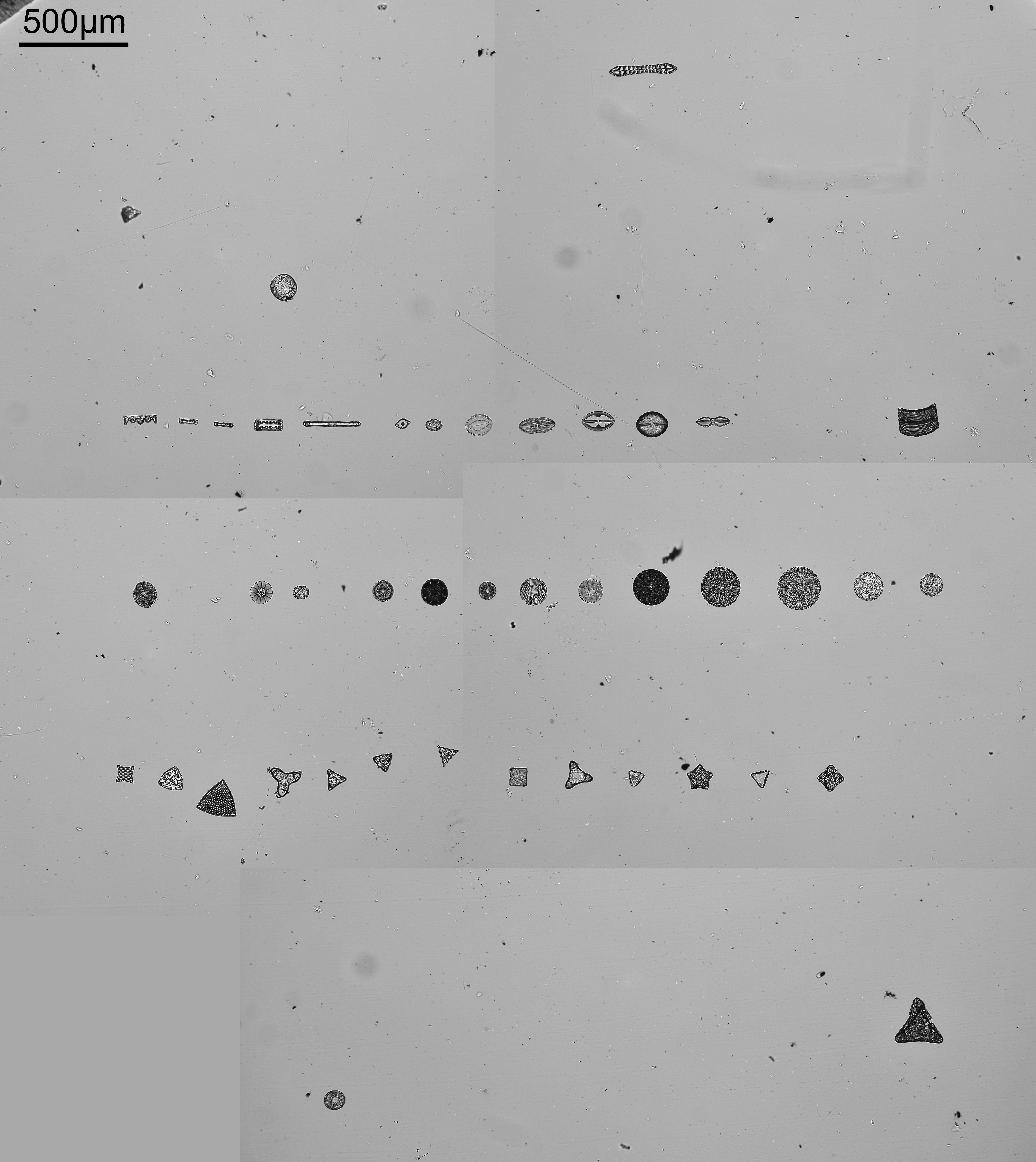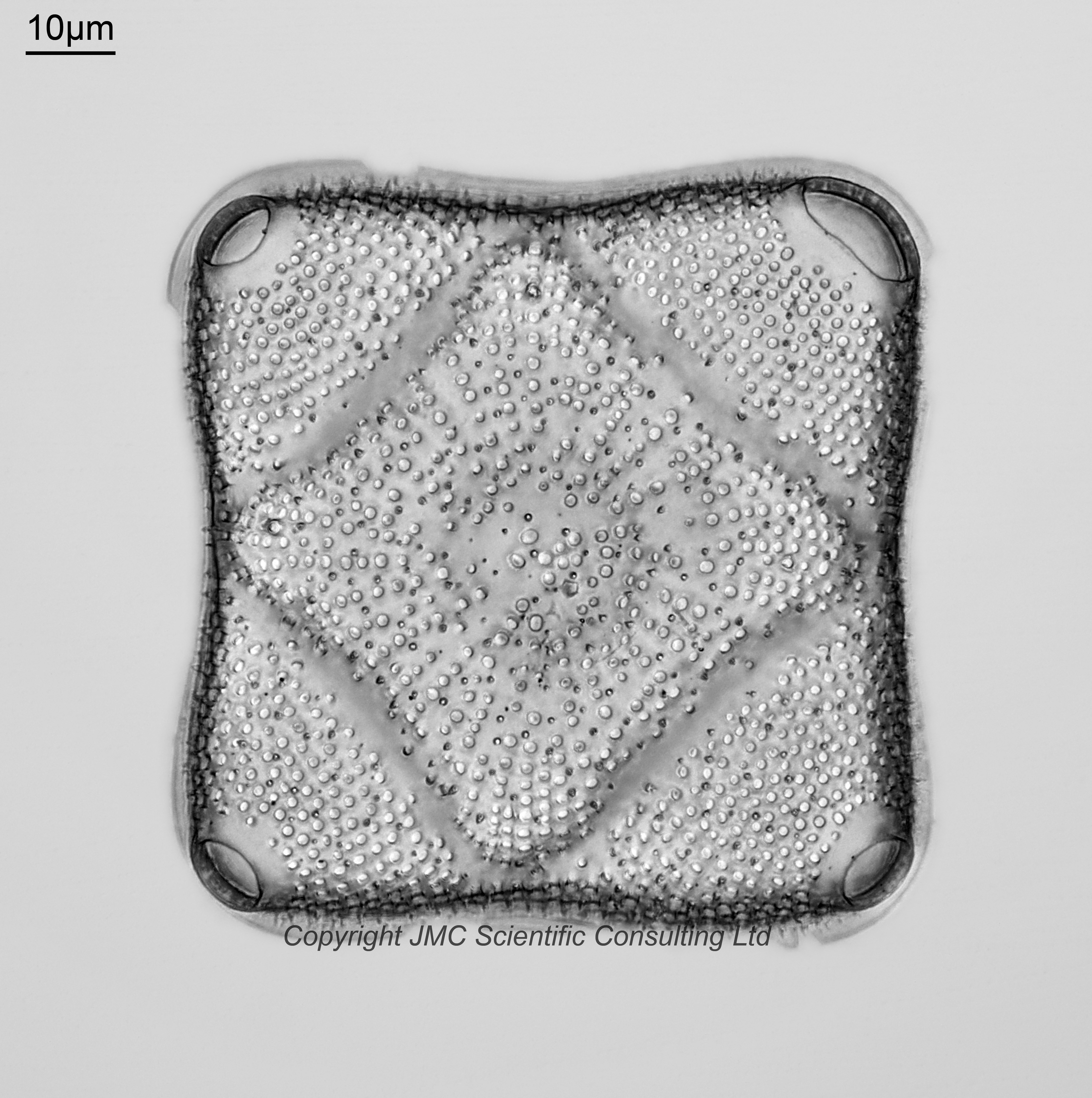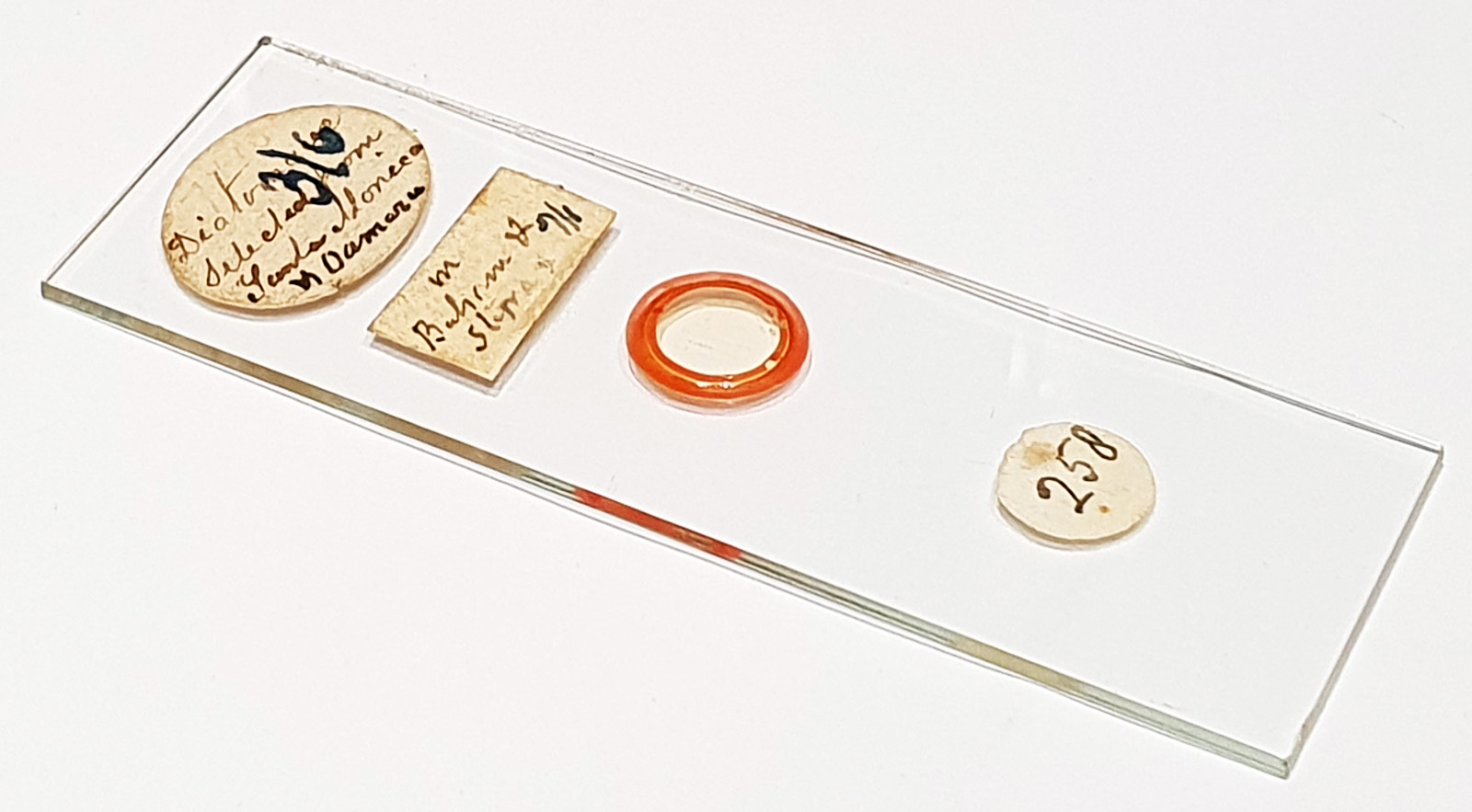













Quite a special arrangement of diatoms from Santa Monica and Oamaru. Unknown preparer. They would have originally been arranged in three lines, however 4 of them how now gone walkabout. This is quite a spaced out arrangement so to image the whole thing required making a mosaic of images using a 4x Nikon Plan Apo NA 0.20 objective. Olympus BHB microscope using 450nm LED light.
Most of the diatoms are in good condition, and there are some unusual species on the slide. As such I chose a dozen to image at high resolution. The main images we captured as follows. 63x Leitz Pl Apo NA 1.40 objective, oil immersion. Olympus Aplanat Achromat condenser, oil immersion, brightfield lighting. 2.5x Nikon CF PL photoeyepiece. Monochrome converted Nikon d850 camera. Stacks prepared in Zerene (Pmax).
I’ve attempted to put names against these. To do that I have used the following references;
Schmidt’s Atlas der Diatomaceenkunde.
The Oamaru Diatoms website.
Oamaru Diatoms, by Desikachary and Sreelatha.
The Santa Monica Diatomaceous Deposit with List of References to Figures of Species, E. A. Schultze and C. Henry Kain, Bulletin of the Torrey Botanical Club , Nov. 30, 1897, Vol. 24, No. 11 (Nov. 30, 1897), pp. 496-504.
I will emphasize here that the names I have ascribed to them are my best attempt to match them to existing information. Any that I am not very sure of have had question marks put after them. They may also have been renamed more recently.
Actinoptychus stella var. clevei. Schmidt’s Atlas Plate 91, Figure 1 (described there as A. clevei). I went with the clevei variant as in the Atlas shows it has having 2 protuberances in each of the 3 sectors which this also has. The description of it as A. stella var. clevei comes from here. I’ve also seen it spelt clevi.
Actinoptychus bismarckii . Schmidt’s Atlas Plate 91, Fig 4. Reported as coming from Santa Monica.
Asterolampra brebissonii. Could also be known as Asteromphalus brebissonii. I am less sure about this one, however I went with the few images I could find online. The view is from the underside, i.e. looking up at it from underneath, as that is the way it was mounted.
Aulacodicus oreganus. Another one I am less sure about, but this seems to match Schmidt’s Atlas Plate 34, Figure 4,5.
Auliscus hardmanianus. I am fairly sure about this one, and perhaps it is the var. hardnmanianus variant.
Auliscus incertus. Schmidt’s Atlas Plate 89, Figure 18. This is from Santa Monica and looks to be a good match, however it is a very small diagram though.
Amphitetras elegans. Also known as Biddulphia elegans. Published in: Greville, R.K. (1866). Descriptions of new and rare Diatoms. Series XVIII. Transactions of the Microscopical Society, New Series, London 14: 1-9, pls I, II.
Porpeia quadrata. Greville, R.K. 1865 . Descriptions of new and rare Diatoms. Series XVI. Transactions of the Microscopical Society, New Series, London 13:43-57, pls V & VI.
Rutilaria hexagona. Schmidt’s Atlas Plate 183, Figure 17, from Santa Monica. There are two halves of this on the slide one above the other (think >< but vertically). The image shows the top one only as the stack became messy with both present.
Stictodiscus californicus var. ecostata. Schmidt’s Atlas Plate 74, Figure 6,7.
Triceratium validum. Schmidt’s Atlas Plate 94, Figure 5. Perhaps a variant of Triceratium trisulcum?
Triceratium crenulatum. Schmidt’s Atlas Plate 128, Figure 20.